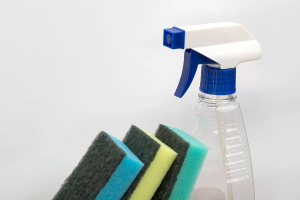by
Sean Ruck, Contributing Editor | August 07, 2020
From the August 2020 issue of HealthCare Business News magazine
With the infection rate of COVID-19 increasing in nearly every state, sterilizing and cleaning are on the minds of many. Of course cleaning and disinfecting has existed since before the pandemic — dating back to at least 150 years ago, with Joseph Lister.
The level of cleaning, the efficacy, the methods and process can differ, and certainly do, depending on the medical device being cleaned, what the device is used for, what materials are used in its construction, and guidelines put out by the CDC and other organizations.
With so much to cover, it’s important that hospitals look to experts for staff training and to implement procedures and protocols. Michael Heusser, clinical engineering manager at Middlesex Health, in Middletown, Connecticut is one of those experts.




Ad Statistics
Times Displayed: 30301
Times Visited: 753 Stay up to date with the latest training to fix, troubleshoot, and maintain your critical care devices. GE HealthCare offers multiple training formats to empower teams and expand knowledge, saving you time and money
At Middlesex, Heusser says different individuals are in charge of cleaning different devices dependent on the use case for the device. For instance, if it was something at a fixed site in a patient’s room, environmental services would be tasked with cleaning it upon discharge of the patient. If the device was mobile and traveled with staff between patient rooms, it’s cleaned by the clinical staff. In terms of surgical instruments, the cleaning for those devices is done through the central sterile processing department, with appropriate cleaning, sterilization and high-level disinfection taking place.
Cleaning is important, but cleaning with the right chemicals or methods is nearly as important.
“There’s really two thresholds,” Heusser said. “Lack of cleaning can be a health risk for patients or staff. It may also impact how well a device functions. But there’s also cleaning with the wrong chemicals, whether it’s because that’s all you have on hand or it’s what staff prefers to use.”
According to Heusser, ECRI has had inappropriate cleaning chemical use on their top 10 health technology hazards list for years, and for good reason. The wrong cleaning chemicals may not actually get a device as clean as it should be or may threaten the integrity of the device. Harsh chemicals can react with materials in undesirable ways — plastics may become brittle and cause potential harm to patients or equipment if pieces break off, or pitting or cracking of surfaces can occur and ultimately harbor more germs in harder to clean areas of a device. There have even been documented cases of fires occurring after fluids have come in contact with the electronics of a device. Of course, that’s getting back to the first threshold — if cleaning is done at all.

